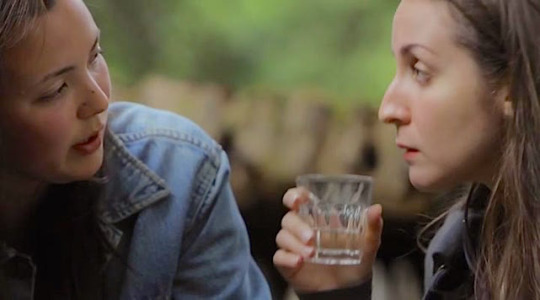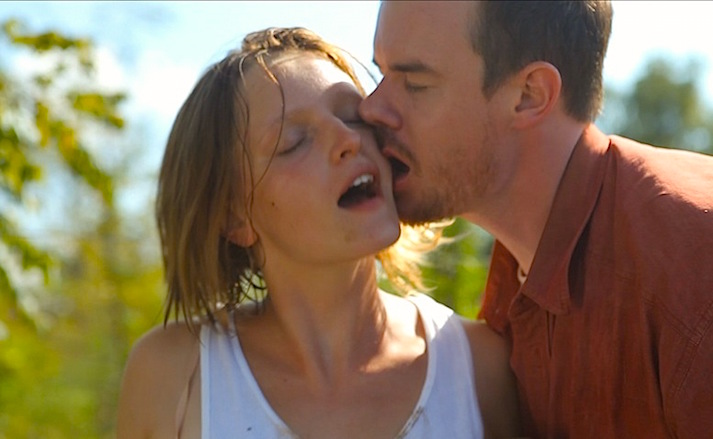The Criterion Collection has been kicking around for over 31 years. What began as LaserDisc format-grounded film restoration and distribution company has emerged as the pre-imminent Art Film Label. The simple icon carries more meaning and value than any major film studio. It has become the symbol for true Art Film validation. While this can be a bit problematic, it is still a sound statement. After the LaserDisc format died, Criterion remained solid thanks to a strong relationship and shared goal with Janus Films. An American film company established in the mid 1950’s, Janus Films has always been focused on bringing the finest in International Cinema to the US. Criterion took over home distribution for Janus long ago. It has been a dream-collaboration for both companies.

This logo has become the benchmark for Film Art — specifically the label of Cinematic Target Audience?
True Film Aficionados
As we move toward Criterion’s 32nd year of operation, they still offer the best and most diverse collection of Art House Cinema. With the advent of Blu-Ray, they are really the only trustworthy source from which we know only the best restoration and transfer will be provided. Sometimes Criterion’s commitment to the Filmmaker Vision requires an adjustment in expectation. Most recently, Criterion’s aspect ratio for Roman Polanski’s Rosemary’s Baby caused a slight ripple in the waters of FilmLuv. But it was a fleeting moment. Criterion had correctly re-adjusted Roman Polanski’s pitch-perfect film of horror, paranoia and the supernatural back to the ratio within which Polanski had intended. Once everyone knew this, grumbling about this ratio fell silent and the waters were calmed.

“Mother, they’re still not sure it is a baby! “
American Filmmaker, David Lynch, holds the first printed copy of Criterion’s re-stored “Eraserhead” blu-ray.
David Lynch, 2014
The very first film to receive The Criterion Collection treatment was Orson Welles’ Citizen Kane. I’ve never seen the LaserDisc but have frequently heard it still surpasses the rather limited “job” Warner Brothers has issued to Blu-Ray. Sadly, this is usually always true. Criterion lost the licensing rights to Citizen Kane, but there hard work remains somewhere safe in that vault.

This film holds the distinction of being the first movie to ever receive “The Criterion Treatment” It was released in the short-lived Laser Disc format in 1984.
Citizen Kane
Orson Welles, 1941
It is at “the ready” whenever WB grows tired of “re-packaging” the same transfer over and over again. Restoration technology has zoomed forward since 1984. I’d love to see what they could do with Citizen Kane now. Many other important titles found their way to Criterion LaserDisc — Woody Allen’s Annie Hall, RKO’s King Kong, Federico Fellini’s La Strada, Michelangelo Antonioni’s classic Blow Up, Ridley Scott’s Blade Runner and Ken Russell’s Tommy (now forever lost to the hands

The Criterion Collection’s highly prized LaserDisc of Ridley Scott’s Blade Runner.
of Sony. I’ve seen the LaserDisc version. It is a whole other world from the Sony Blu-Ray. And sorry kids, The Devils never made it to Criterion. And it is not for lack of trying. WB is the sole reason this controversial and acclaimed Ken Russell remains a murky mess on bootlegs or Korean “edited” version DVD’s. The original Theatrical Cut has never been released. Never. Blame Warner Brothers. Numerous petitions and even the sad loss of Ken Russell has not moved Warner Brothers to let the film out. No reason has ever been given.

“The Devils is not a film for everyone . . .”
Vanessa Redgrave as Sister Jeanne
The Devils
Ken Russell, 1971
Cinematography | David Watkin
Maybe they are too embarrassed to admit that they lost or destroyed. But you see it doesn’t matter. Ken Russell’s family retains the original cut of The Devils in safe keeping and pristine. Warner Brothers still refuses.
Criterion also restored most of Stanley Kubrick’s films for LaserDisc that continue to rival anything Warners has released to Blu-Ray. Rob Reiner’s The Princess Bride, Danny Boyle’s Trainspotting as well Mel Brook’s The Producers, Hal Ashby’s Shampoo, Barbra Streisand’s A Star Is Born and Prince of Tides, Jonathan Demme’s Silence of the Lambs, The Marx Bros’ A Night at the Opera, Martin Scorsese’s Taxi Driver, The Wizard of Oz (now owned by Warner Brothers), Gene Kelly’s Singing in the Rain and David Cronenberg’s Dead Ringers all exist in exceptional LaserDisc transfers owned by Criterion.

“On every street in every city, there’s a nobody who dreams of being a somebody.”
Robert De Niro
Taxi Driver
Martin Scorsese, 1976
The titles were snatched back by the likes of WB and Sony. The one thing they will never be able to snatch back are the incredible transfers and often obscure special features Criterion secured. A close examination reveals Warner Brothers and Sony to be the most difficult studios with whom Criterion has had to deal. However, the oddest challenges come up when trying to secure the required licensing. Don’t even get me started on Shampoo. Please note the very poor Sony DVD transfer below. Wait. I’m pushing my luck.
!["You wanna fuck?" Well, yes, Mr. [insert name here] is "totally OK" to take Carrie Fisher up on her offer. Shampoo Hal Ashby, 1975 Cinematography | László Kovács](https://mattystanfield.wordpress.com/wp-content/uploads/2015/07/carrie-carrie-fisher-34047476-600-400.jpg?w=922)
“You wanna fuck?”
Well, yes, Mr. [insert name here] is “totally OK” to take Carrie Fisher up on her offer.
Shampoo
Hal Ashby, 1975
Cinematography | László Kovács

Does anyone really believe that this is the best Warner Brothers can do?
That would be Rutger Hauer hidden in unintended shadow
Blade Runner
Ridley Scott, 1982
And seriously, Blade Runner. Warner Bros, what the fuck? I’d gladly give up my unicorn snow globe for a better transfer. And poor Wizard of Oz. Warner Brothers has issued/re-issued and re-packaged it so many times without ever increasing the quality of transfer. At least I can’t see or hear any improvements.
Recent years have seen Criterion step up its marketing. Last year saw the arrival of beautiful hard-backed book, Criterion Designs, filled with Criterion’s much admired approach to packaging. This book also offers a detailed listing of all the great films Criterion restored for LaserDisc during the early years. It is a stunningly beautiful book of art inspired by some of the greatest films of all time.

Anna Karina interviewed by Criterion.
Criterion, 2002
The folks at Criterion have really stepped up the innovation of packaging and design. It inspires all Film Aficionados. “Fake” Criterion art designs are to be found in all corners of the Cyber World. Some are truly brilliant. The point of these “fake” covers is that those designers who make them hope to stir Criterion to pursue certain films for “The Criterion Collection Treatment.”

Peter Falk and Gena Rowlands interviewed by Criterion.
Criterion, 2004
Sadly, it takes a whole lot more than some clever artwork, petitions and suggestion for Criterion to take on a new film. Rest assured, Criterion is working on securing a number of films to join the collection. And they do their very best to secure time and interviews with key players. Great surprises are revealed as iconic artists such Anna Karina, Peter Falk, Gena Rowlands and Isabelle Huppert lend insight into their roles and experiences.

Isabelle Huppert discusses Jean-Luc Godard with Criterion.
Criterion, 2014
In the last 5 years Criterion’s web site has been elevated to match the quality of the films they produce. A great On-Line Forum and access to film essays and clips are only a couple of the major adds to the site. For me, the most fun are the 3 Reasons vid-clips that quickly explain why a film has been chosen. Even more fun is when Film Artists are given “access” to The Criterion Closet.

Nicolas Winding Refn grabs Alex Cox’s “Repo Man” during his visit to The Criterion Closet.
Criterion, 2013
It is fun to watch and listen to filmmakers as each reacts to what is essentially a room filled with approximately 5-10 copies of all DVD/Blu-Rays Criterion has produced. It is kind of like entering a cinematic candy store. It reminds me a bit of that “rush” my 5 year-old heart experienced overtime I went into Sam Goody’s with my mom. I was not usually allowed to get anything, but I loved roaming through the record racks on the tip of my toes. Too short to ever really see the full album, it was still awesome. The Criterion Closet is like that. There are so many film artists I’d love see look through the closet. Would it not be cool to see The Great Carrie Fisher, Sissy Spacek, Kentucker Audley, Joe Swanberg, Lynn Shelton and Catherine Keener let loose in there?!?!? Send them into the tiny room in couples. Carrie Fisher and Catherine Keener would be fun duo to watch!

Korean Filmmaker, Joon-ho Bong visits The Criterion Closet.
Criterion, 2014
The website is full of these vid-clips.

British Filmmaker, Richard Ayoade visits The Criterion Closet.
Criterion, 2014
If you’ve never been given the opportunity to walk into the surprisingly little room and are curious, you can find the clips at the link below.
https://www.criterion.com
My only “complaint” is that there seems to be some odd sort of “Boy’s Club” mentality going down. Why have we not seen any female filmmakers explore The Criterion Closet?

Canadian actor, Michael Cera visits The Criterion Closet.
Criterion, 2015
The reason is not as “political” as you might think. There is no high-tech innovation when entering the closet. The lighting isn’t great. The absence of female actors is more linked to “publicist worry” than anything else. Sometimes the “official” trips are carefully planned, but most of the time these happen more or less “off the cuff.” Still, some effort needs to be made. Personally, I’d love to see Claire Denis raid The Criterion Closet. And, if she is in NYC — she would be more than “game” for it. And has anyone even asked Lena Dunham or Greta Gerwig? Neither of these very important female artists are worried about being ready for their “close-up.” Criterion? Can you hear me? Not everyone is Barbra Streisand or Goldie Hawn!

The late American Cinematographer, Harris Savides visits The Criterion Closet.
Criterion, 2012
Since the advent of The Criterion Collection Blu-Ray, I’ve slowly begun the process of forming my own version of The Criterion Collection. It is not very big, but I’m on a budget. And, truth be known, more than a few were given to me! Covert operating has it’s privileges! I call this ever-growing collection My Pitiable Criterion Bookshelves! I suppose my most valued “player” in my collection is Kar-wai Wong’s Chungking Express which is tragically out of print. And it it is not likely to return anytime soon. The most devastating loss? I used to own the coveted Criterion transfer of Nicolas Roeg’s The Man Who Fell To Earth. It is long lost. Don’t ask. By the way, if you do not already own it, you are well advised to purchase Jim Jarmusch’s Mystery Train fast while you still can. Just a suggestion.

Welcome to my Criterion Bookcase…
I was recently give the task of selecting six discs from my sad little Criterion Collection and offer a brief discussion of each. The methodology was simple. I sat in front of my bookcase in Lotus Position. Strained my Chakra System and sent my Film Loving aura’s energy upward and reached forward 6 times to pull a movie. Ok. I’m lying. I’ve no interest in Yoga or anything applied toward The New Age without irony.
Essentially, I just squatted in front of the case while my dodgy cat and nutty dog raced around me and blindly pulled 6 titles. I should add that this created quite a mess as over 16 titles fell over and out. These are in no particular order and I do not particularly love one of these films than the other. I selected these Blu-Rays accidentally. This seemed the best way to go. In the end I decided to make an executive decision and only offer my insights into 4 of my initial 6. I did this by closing my eyes and picking up 4. So here are my comments regarding 3 of my Pitiable Collection. Let the fun begin!

Paris, Texas
Wim Wenders, 1984
Cinematography | Robby Müller
I actually have a kind of interesting connection to Wim Wender’s Paris, Texas. I was just entering the deep end of the pool of drugs at the age of 14. I loved movies, but my knowledge was largely limited to the movies that played in my home town of Beaumont, Texas. Around this time I became enamored of Nastassja Kinski. Her images adorned my bedroom walls. I was lying on the floor of my bedroom when my crazy-ass father entered and whispered, “Would you like to meet Nastassja Kinski?”
Only partially annoyed I answered, “No. I would hate to meet Nastassja Kinski. I only have her all over my walls because she is of no interest to me.”
“Well, that’s too bad because of friend of mine has invited us over to a club where she is shooting a movie.”
I jolted up out of my weed-infused stupor, “Really? Are you kidding? Yes! Can I bring — ”
“No. And you have to promise me you don’t mention this to your mother. Never. Got it?”
“Ok.” My parents had re-entered their ill-advised marriage again. He told me to call in sick the following day. The Donut Shop where have to deal. I was gonna meet Nastassja Kinski! The next morning I joined my dad in his huge car and we were on our way. I should mention that my hometown of Beaumont, Texas is not an ideal place. When my insane father told me he was friends with both the owner, manager and some of the “girls” of a place called The Keyhole Klub located in Port Arthur. Yes, aside from the film crew — the first thing I noticed is that this was “club” with a “K.”
I don’t mean to cause offense, but if Beaumont is the “armpit” of Texas then Port Arthur would have to be the “perineum” of Texas. Port Arthur could be rough in a major way. At the time, this was the sort of town which you really needed to avoid. And The Keyhole Klub was more or less just off the battered old highway.

All that appears to remain of The Keyhole Klub. Apparently it was shut down some time ago. This sign is gone. The building still stands, but it is all boarded up.
Keyhole Klub,
Port Arthur, Texas, USA
I don’t think I was yet fully aware of “things” at this point in my life. I knew what a prostitute was and I understood most of the fundamentals of sex thanks to my father’s porn collection and observations hanging out with friends. But I’m not sure if I really understood that this “klub” was a “legalized” illegal operation. Of course this being my father — it all makes sense. He knew the owner because he had cut him a good deal on a shipment of guns. He had also trained several of “the girls” to shoot guns. These “girls” looked more like kind of overly made-up creepy old ladies to me. In reality they were probably barely 30. This is remembered from the eyes of a 14 year old stoner.
The movie crew looked both professional and confused. My father introduced me to the owner of the “klub” – think Willem Dafoe as “Bobby” from David Lynch’s Wild At Heart. This dude was seriously creepy. But to be honest “creepy” was not a new reality to me back then.
The owner told me that she hadn’t yet arrived. Or if she had he hadn’t noticed.
“Strange girl, that one. Puurty. But fuckin’ strange. You don’t look much like your Daddy.”
He and my father began to talk about some gun delivery he was still waiting “on.”
I asked, “So where is Nastassja Kinski and why would she be here?” Just then one of “the girls” walked up to the owner.
The owner told “the girl” to walk me around and keep me out of trouble. The film crew had full control of the “klub” for the day and into the early part of the night. “The girl” introduced me to Harry Dean Stanton. We shook hands. He asked what a kid like me was doing there. I think I just shrugged. Then she introduced me to the film’s director. He seemed hot and frustrated, but extended his hand and said hello in a friendly, thick accent of some sort. A sweaty guy with an even thicker accent walked up to talk to the director. She introduced me to him as well. This time I asked, “Lasso?” “No. Lazlow.” I had no clue of who they were. It did dawn on me that I had seen Stanton might have been in Coal Miner’s Daughter and The Rose, but I wasn’t sure. Nor was “the girl.”
She asked me if I wanted to go inside where there was air-conditioning and she’d get me a Coke. Would I possibly see Miss. Kinski? I entered the suspect looking building. I wish I could remember the name of “the girl” but I can’t. She took me through into this dark hallway. It was seemed dirty and smelled odd. A hall of one-way mirrors with tiny desks and phones placed in front of the mirrors. “The girl” told me that men liked to pay money to talk to them. I asked how and she let me inside one of the rooms. Suddenly I heard her voice and she told me she could see and hear me, but I couldn’t see her.

“He thought if she never got jealous of him that she didn’t really care about him. Jealousy was a sign of her love for him…”
Nastassja Kinski
Paris, Texas
Wim Wenders, 1984
Cinematography | Robby Müller
The room was in a state of half-construction. There was a stool, chairs, toys, sex toys and perfumes. She told me that every room was the same.
We returned to the cruel heat, humidity and sunlight. I found my father talking with a group of rednecks. One asked me if I liked to go “shootin‘” like my dad. I answered “no.”
This led to a spit and a new question, “You mean you don’t know how to shoot a gun, boy?”
My rebellion was in full-tilt, “Oh yeah. I can shoot a gun. And I shoot a gun well.”
My father offered his standard joke while his hand was firmly clutched around the back of my neck, “You have to excuse my son. If Jesus walked up he’d tell him to get a haircut!” …this was met with laughter and more Skoal spitting.
I sulked all the way back to Beaumont. It would be several years before I realized I had met The Harry Dean Stanton, The Laszlo Kovacs and The Great Wim Wenders. All of whom were very nice to me. I was an annoyed teenager hellbent on meeting a “real” star. It is ironic. Year later I would have the opportunity of meeting Mr. Wenders again. He was charming, easy-going and very open. I did not let him know we had met years before. The really interesting thing about my “connection” to the movie is that when I finally saw the film itself, one of if not the most important moments in Paris, Texas takes place within the walls of a gross Port Arthur sex club.

Nastassja Kinski / Harry Dean Stanton
Paris, Texas
Wim Wenders, 1984
Cinematography | Robby Müller
Somehow Kovacs and Wenders transformed that little room and one-way mirror into something interestingly beautiful. The true magic of filmmaking. Obviously, Ms. Kinski eventually showed up. And she is exceptional in the film. Every time I see this movie I wonder if they took out the sex toys before or after she entered the room. I think this might be Wim Winders’ greatest film. For me, it is most definitely a cinematic masterpiece. Harry Dean Stanton barely speaks at all, but he conveys all and more than you need to know or understand. He is practically mute until he enters the sex club. He sees his far-too young wife, but she can’t see him. Stanton reveals his character’s truth in one of the most beautifully sad cinematic moments.
Robby Müller’s cinematography has never been so fully utilized. (And that is saying a great deal) This is a cinematic poetry of “the ordinary.” Magically, Wenders’ gives this visual poem flight into “the extraordinary.” Bittersweet beauty. Brilliant.
While we are still in the 1980’s, let’s move to 1986 and Jim Jarmusch’s Down by Law.

“It’s not where you start – It’s where you start again.”
Down by Law
Jim Jarmusch, 1986
Cinematography | Robby Müller
Jim Jarmusch’s great movie has taken on a new level of importance in the past decade. Not that it wasn’t important upon it’s initial release. It was. I skipped a day of school and drove my beat-up old Buick to Houston to see an afternoon screening. It felt so vital and new. This was my first Jamusch movie. And what a movie it was! There is a great difference in seeing this movie through the eyes of an 17 year old and the eyes of a thirty-something. There is an even greater difference viewing it through the eyes of a fourty-something. Each viewing is rewarding, but age and the passing of time bring this simple, low-budget movie a far deeper level of meaning. Add in the aftermath of Katrina, this is an important portrait of a New Orleans long gone.
Jarmusch and his actors capture the cool and the conflict. Robby Müller’s brilliant cinematography captures glimpses of this city that have been forever changed. John Lurie, Tom Waits and Roberto Benigni (before I found him annoying) are perfectly cast as fictional versions of themselves. Ellen Barkin shows up as well. This is a young Barkin who is already far more talented than her age would suggest. I remember thinking it funny as she tossed our poor Zack’s possessions out the window of their grubby and yet impossibly cool apartment. In my thirties I was in pain for Tom Wait’s character. He only has a few things and what she tosses out that window are priceless.

” You don’t take care of me. You don’t want me…”
Ellen Barkin / Tom Waits
Down by Law
Jim Jarmusch, 1986
Cinematography | Robby Müller
I knew Tom Waits to be a cool singer/songwriter who was creating experimental twists on the blues and jazz. He had dumped Rickie Lee Jones and inspired her to create an entire iconic album. I didn’t know who John Lurie was, but he seemed cool. Benigni was a harmless clown. As these three “true” characters find themselves stuck in a jail cell the naturalistic charm and humor comes to full bloom. We follow them on a simple escape. Now fugitives, we see them argue, bond and joined together as outsiders. The film rambles it’s way to an ending that is as satisfying as it is kind of sad and unsure. Jim Jarmusch is an essential filmmaker. Over the years his eccentricities sometimes veer far deeply into his “hipster cool” — this, for me, remains his best cinematic moment. Somewhere in my mind, these three men are still sulking, joking and sliding through their lives. Lives that are far more meaningful that surface view allows.

“Life is like the surf, so give yourself away like the sea.”
Y Tu Mamá También
Alfonso Cuarón, 2001
Cinematography | Emmanuel Lubezki
Expectations were not that high as we took our seats to see this film. Alfonso Cuarón’s movie is framed as if a “documentary” which features a distant and dis-engaged narrator. It is an effective device. As we “meet” the 3 leading characters of the story, we are allowed to make “judgements” about each one. I stress the word “judgement” because that is what we do. It is as if Cuaron gives his audience permission to allow us to wedge each three “characters” into our own sense of stereotyping and passive viewpoints. As the movie progresses, the idea of documentary gives sway to leaving the audience as “flies on the walls.” Our pre-conceived ideas of each character proves incorrect. These characters do not fit into cultures’ restrictively simple “labels.”
Thanks to the skills of Maribel Verdú, Diego Luna and most especially Gael García Bernal — these characters very quickly become “people” filled with challenges and very real worries and concerns. The “older” woman is not really that much older than her male friends. She is barely a decade older. But as a woman and as an adult who has had a bit more experience, she is more forgiving of her friend’s limitations. It doesn’t mean she understands them. Julio and Tenoch have been raised in very different ways and within very contrasting social classes. It has not prevented a deep friendship, but as they grow older each is painfully aware of their own “judgements” and “prejudices.”

Maribel Verdú, Diego Luna and Gael Garcia Bernal
Y Tu Mamá También
Alfonso Cuarón, 2001
Cinematography | Emmanuel Lubezki
What seems like a simple road trip and coming of age story is far more complex. At the time the film was released, Cuaron’s use of explicit sex went far beyond the range of the American R-rating. It was hit with the often damaging and unfair “NC-17” label. For younger people this film became an infamously erotic, bold and graphic look at sexuality. It would be unfair to not allow the film its eroticism. It is erotic. It is also a very intelligent examination of sexuality from both the limited perspectives of two only recently “legally” recognized young adult males as well as an adult female perspective. Sexuality is at the core of this beautiful film.
The road trip is not simple. It is filled with glimpses into The Mexican culture which is simultaneously beautiful, confused and horrifically economically corrupt tension. In addition, this “little” road trip reveals itself to be a realistic and troubling exploration of male bonding. When that bonding dips it’s toes into the deep waters of sexuality — this friendship can never return to it’s innocent fun and love. It is severed. It is damaged beyond repair. And our leading female character is dealing with life’s most challenging and horrifying realities. Beyond lonely, Luisa is trying desperately to find solace in a world that has refused it. These two kind young men represent a youth she has almost forgotten. And while she tries to help guide these two boys into a smarter sexual understanding she also pushes them too fast and too far.

Gael García Bernal and his friend are about to go deeper than their friendship can survive.
Gael García Bernal
Y Tu Mamá También
Alfonso Cuarón, 2001
Cinematography | Emmanuel Lubezki
She is unable to notice this because of an internal horror that she keep hidden. Not because she is afraid to share it — but because she is too afraid to allow herself to view it. Y Tu Mama También presents itself as a sexy coming of age movie that is actually a profound and tragically sad reality that comes with adulthood. Underneath that already complex achievement lies a societal-political of a Mexico that is about to explode onto other cultures and countries that I don’t I was even aware of at the the time. More than just an “important” work, this is stunning adult film that no one will want to miss.

“Fact, fantasy or memory?”
My Winnipeg
Guy Maddin, 2007
Cinematography | Jody Shapiro
If I were pushed, I’d have to admit that this is probably my favorite of the 4 movie from my Criterion Collection. Guy Maddin’s work is “tripy” and constantly shifts from “Horror” to “Dark Comedy.” But every film also offers an enticing beauty. The Saddest Music in the World would prove to be his most “accessible” movie. He emerged from the fringes of his earlier shorts and experimental films. Interestingly, as good as that film is — it is far from being one of his best. Following the Art House success of Saddest Music and the success of 2006’s Brand Upon The Brain, he created his most personal film.
I had the pleasure of seeing My Winnipeg before it was released to the film festival circuit and it’s all too-limited US release. While Brand Upon the Brain was a fascinating experimental re-visit to silent film, My Winnipeg takes the “form” of a documentary. This “formation” features re-enactments of Maddin’s “personal memory” and of Winnipeg’s eccentric “history.” Utilizing his standard devices of long ago abandoned cinematic tricks. This is not a documentary that can be accepted as “truth.” This is an artist’s re-invented collection of memories that he has bent, twisted and often self-created or imagined.
The late Roger Ebert wrote an incredible review of My Winnipeg that captured my own viewpoints far better than I could ever articulate. I still remember a very key comment Ebert gave in his review. I did’t remember it well enough to quote, but it was easy to find on-line.
Roger Ebert wrote, that Winnipeg’s “city fathers commissioned it [the film] as a documentary, to be made by “the mad poet of Manitoba,” as a Canadian magazine termed him. Maddin has never left his hometown, although judging by this film, it has left him.” This is an almost perfect summation of the movie. I highly encourage you seek Ebert’s review of this odd but effective film prior to seeing it. And if you have not seen it — you must check it out. Ebert’s one sentence frames Maddin’s incredible film perfectly.
We never doubt that Maddin loves and is proud of “his” Winnipeg, but we can’t really be sure that we can trust what he shows and tells us. He rejects the idea of creating the “documentary” for which he was commissioned. Instead he pursues an experimental and surreal glimpse back into what might be a collective feeling of a city long gone. He examines an idea of himself via what are very likely false childhood “memories.” I call these memories “false” because they are too absurd to be considered true.

Mother does not always stand for comfort..
Ann Savage casually chats her son out of suicide.
My Winnipeg
Guy Maddin, 2007
Cinematography | Jody Shapiro
His “mom” is more a symbol of Winnipeg than a maternal relation. In fact his entire “family” emerges more as metaphors or symbols of a city’s history long abandoned. It is partly from his own familial “experience” and the city’s “history” in sport and retail that Maddin once again returns to his familiar examination of sexuality. Maddin’s work has always found ways to root themselves into the ream of sex. He has never shied away from a conflicted view of sexuality. This includes a constant re-emerging study of repressed homosexuality. I do not mean to imply anything regarding Maddin’s real sexuality or identity, but his work continually pulls his audience to the attention of a vague interest related to “latent homosexuality.” It appears to be a source of conflict and humor. This is not a politically offensive “conflict” or “humor.” It is expressed as both a sort of longing, sadness and curiosity.
The role of women in Maddin’s work is also takes form in a mystical riddle. The female characters share maternal instincts as much as they offer sexual pleasure and danger. Once again, this is not misogyny. The idea of women is a source of conflict within Maddlin’s cinematic world. A conflict that is interestingly free of rage or objectification. Women seem to allude him. They are mysterious and powerful — and they enchant him. One senses that Maddin is truly encaged in what becomes a true magical mystery.

Marcel Dzama’s effective design for The Criterion Collection’s packaging.
My Winnipeg
Guy Maddin, 2007
My Winnipeg offers the perfect formation of Guy Maddin’s eccentric, dark, disturbing and often funny ideas and style. This is a fully formed world in which we are placed. It is logical that this formation takes place as Maddin is paying homage and also applying a sense of sadness toward the mysteries of childhood perspective and a time long ago. Winnipeg culture is tied to the filmmaker’s identity. This film is a rewarding experience. After the movie ends, I feel as if I need to re-adjust my vision. And the lonesome laments of Maddin’s brilliant film lingers. A poster for the film’s original release hangs in my dining room. Moments from this magical movie are forever in my own memory. My Winnipeg is a true Cinematic Masterpiece. It also that defies “genre.” Having the opportunity to speak with Maddin, and one does speak “with” him. He is a good a listener as speaker. You are able to connect this very grounded man to his films. Bizarre as they are, each is somehow grounded in a reality that is uniquely intellectual, beautiful and uniquely his own. Every shot, every character is different and sometimes even “evil” — but this filmmaker has love for each one.
Criterion has done an outstanding job at transferring this film. Fingers-crossed that they are soon able to do the same with Brand Upon The Brain! via blu-ray and a re-freshed VOD version. Criterion released BUTB to DVD which offers alternate audio narrations of the silent film. Isabella Rossellini provides the “official” narration to great effect, but it is interesting to hear other actors serve as narrators. Each narration delivery seems to change the film’s intentions and meanings. Technology has advanced a great deal since this film joined The Criterion Collection as a Blu-Ray. Let’s hope they will be able to re-master and re-issue to Blu-Ray and VOD soon!

” All things will happen again. And again.”
Brand Upon the Brain! A Remembrance in 12 Chapters
Guy Maddin, 2006
Cinematography | Benjamin Kasulke
Meanwhile, we can dream… I particularly love the dreams of Designer and Design Firm, Variant. Variant is a boutique design agency specializing in key art for independent film. Beautiful work to be discovered there. I love their design for Stanley Kubrick’s The Shining.
www.variantcreative.com
Another great site devoted to the art of design for “dream” Criterion Covers is far more subversive. However, I do think a case could be made for Adam Bernstein’s cinematic adaptation of Julia Sweeney’s iconic SNL parody of androgyny. It’s Pat was a bad film, but over time it has developed an odd sort of entertainment value. There is goofy but legitimate amount of fun in this strange little cinematic error. “I played with the Ween!” You can find and follow both via Tumblr and Twitter:
http://fakecriterions.tumblr.com
In all honesty, FakeCriterion’s design for Shane Carruth’s brilliant Upstream Color erbp is far better than erbp Films’ official packaging design.

The power of Film Art is unlimited and subjective. This is a concept that is well understood by The Criterion Collection.
Matty Stanfield
7.30.2015



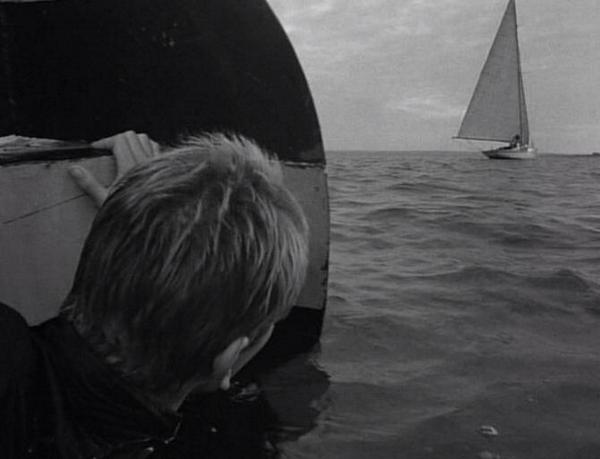














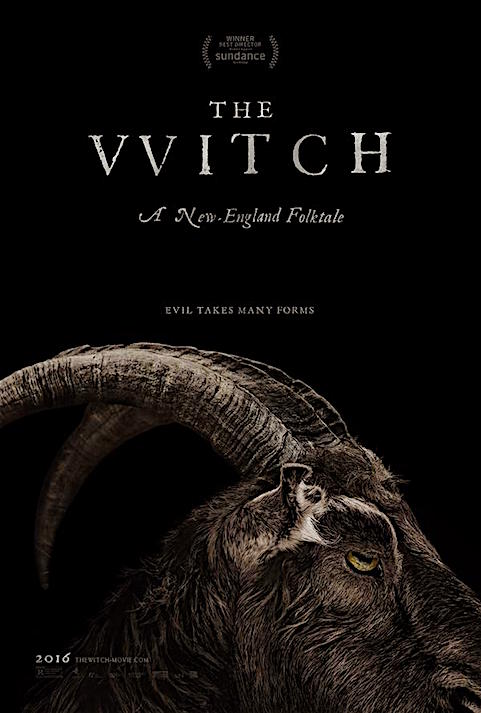
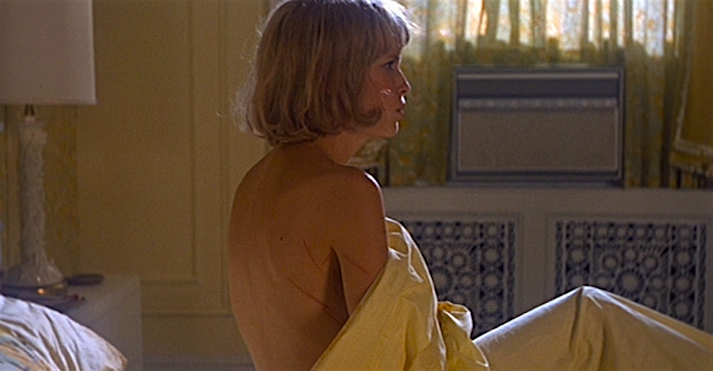

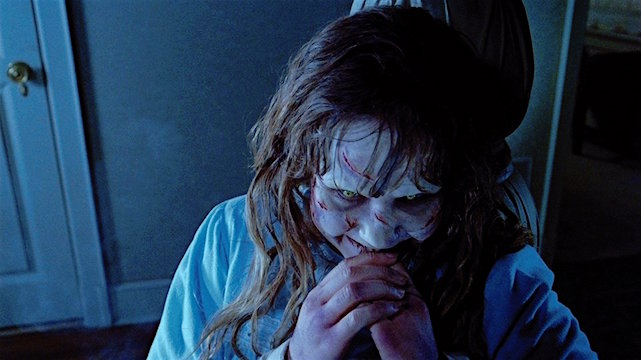

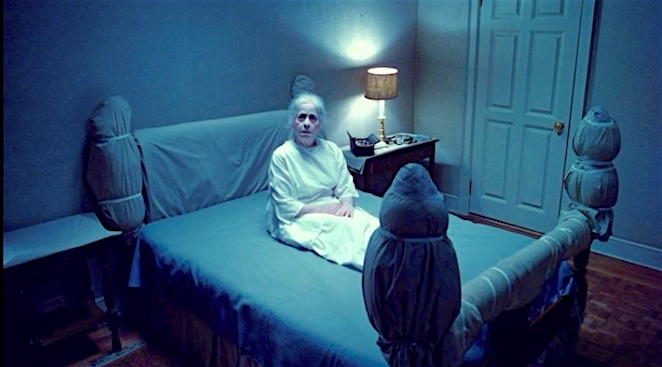

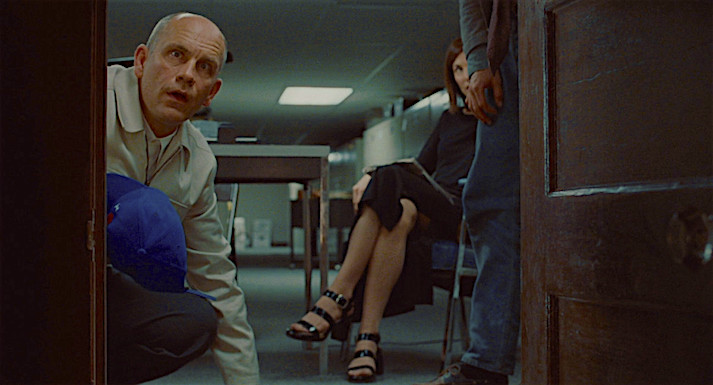
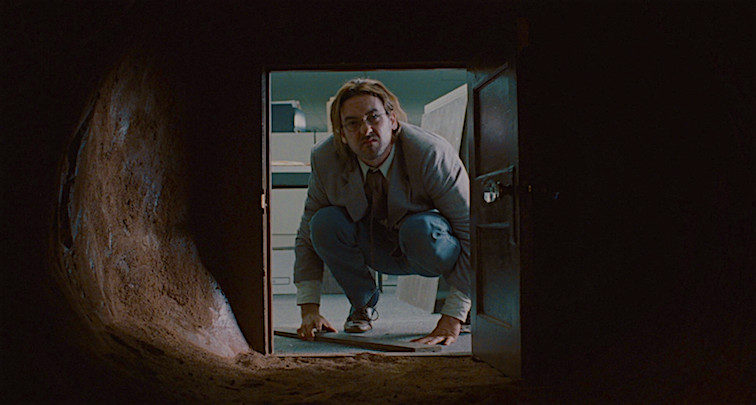


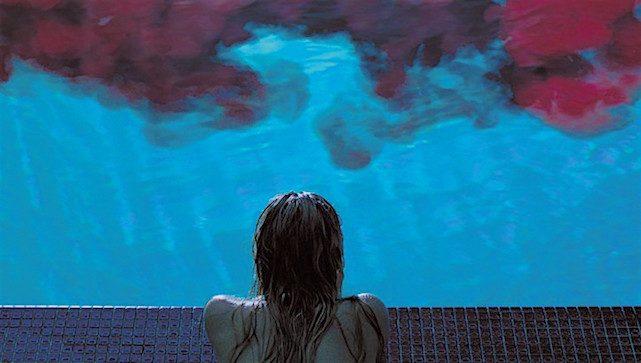
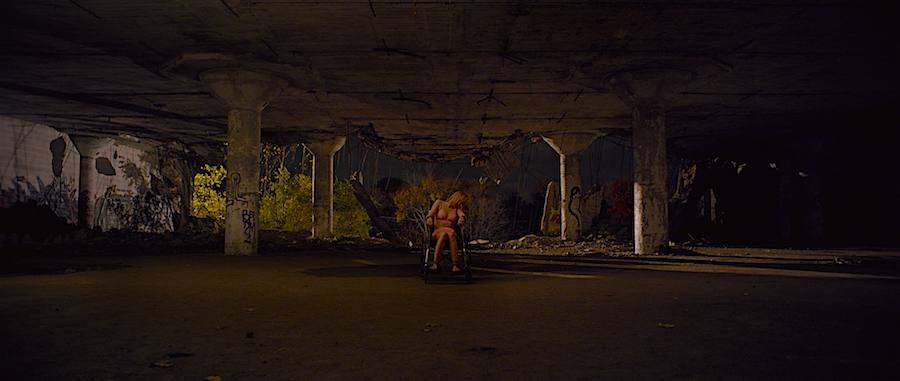

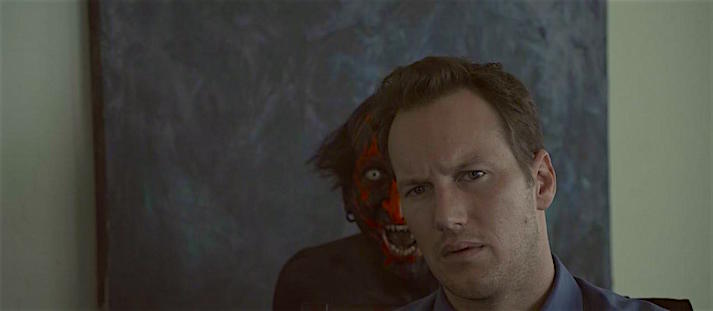
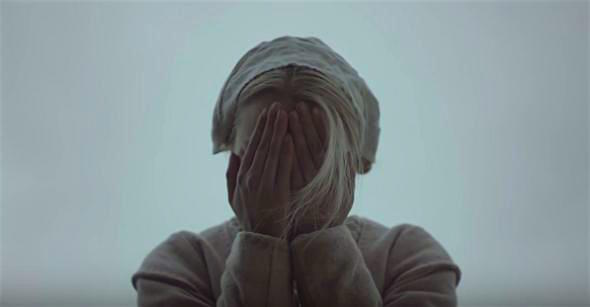
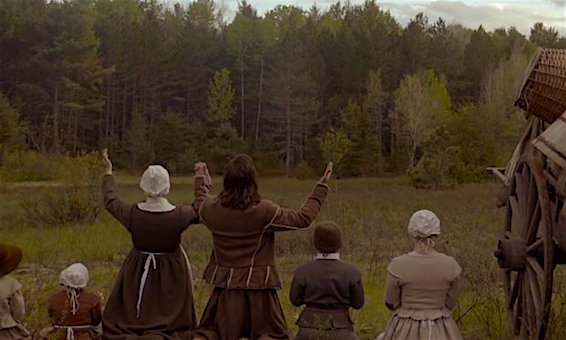

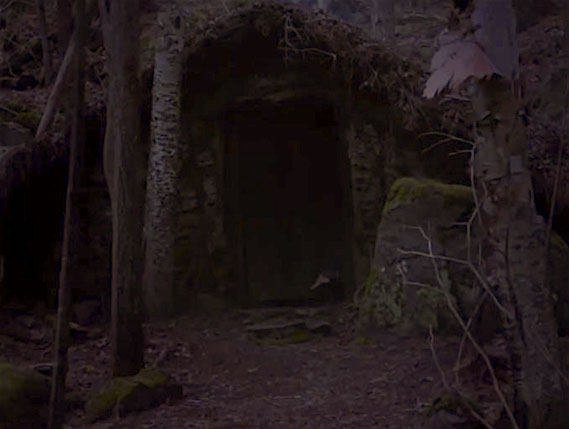


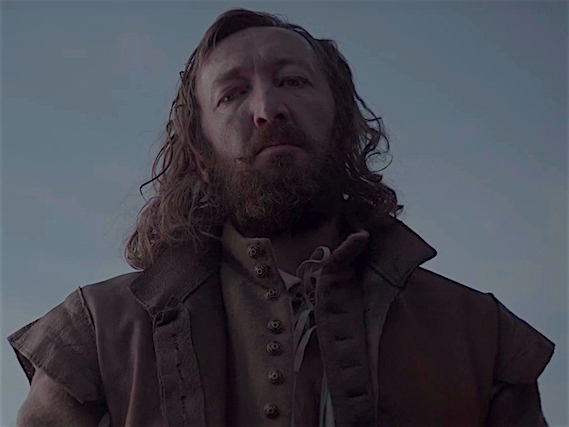












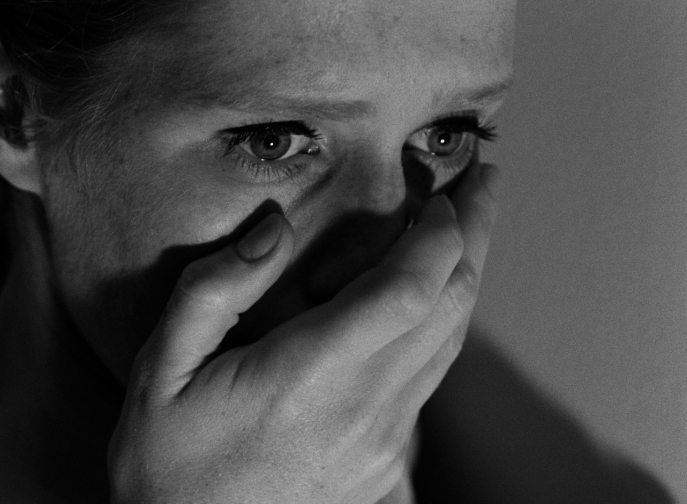










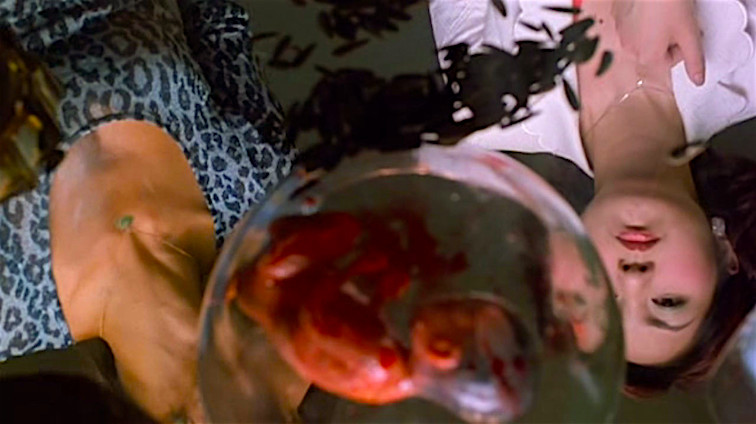







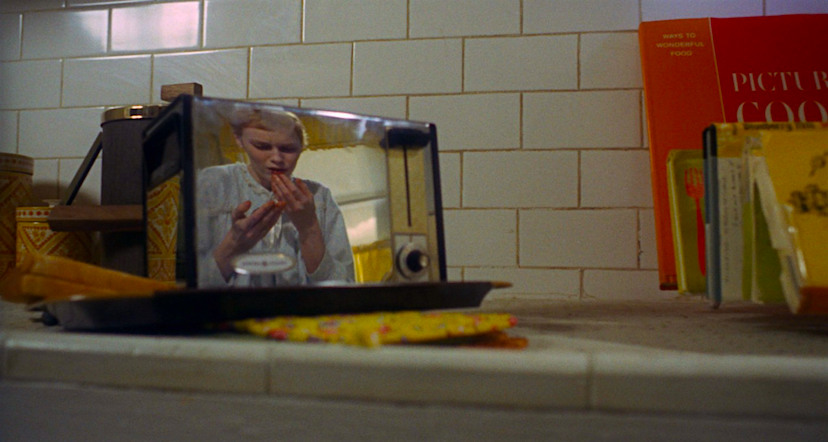































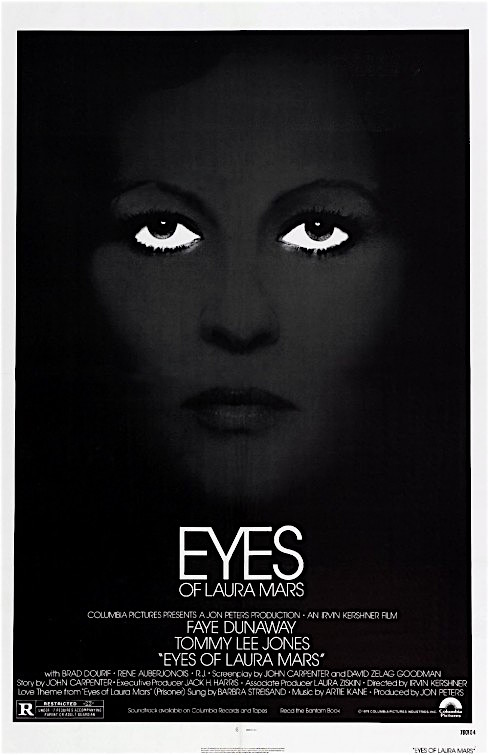










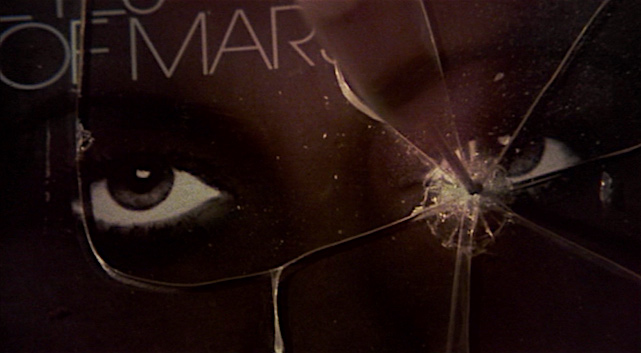




























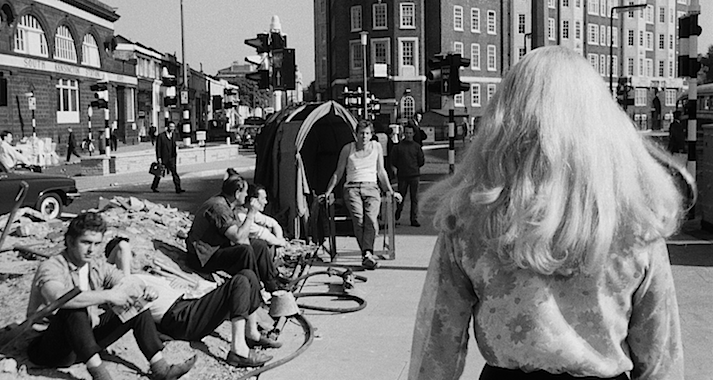
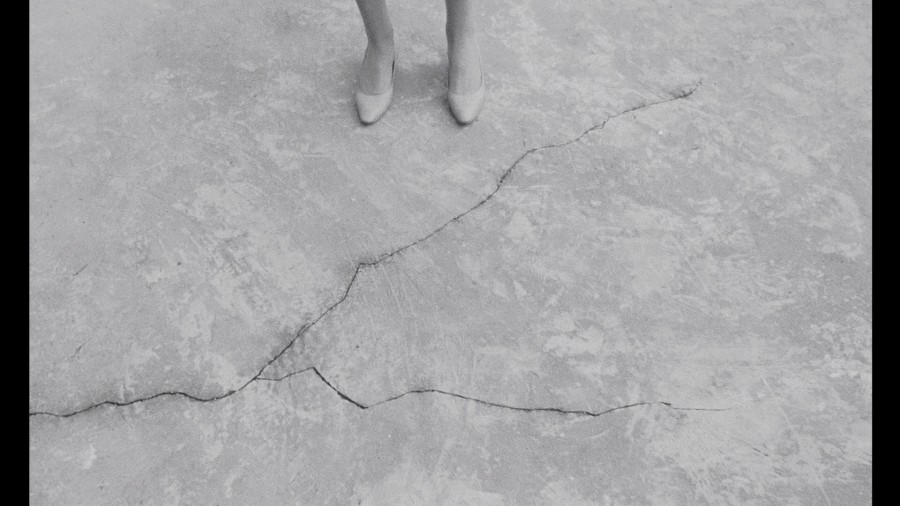

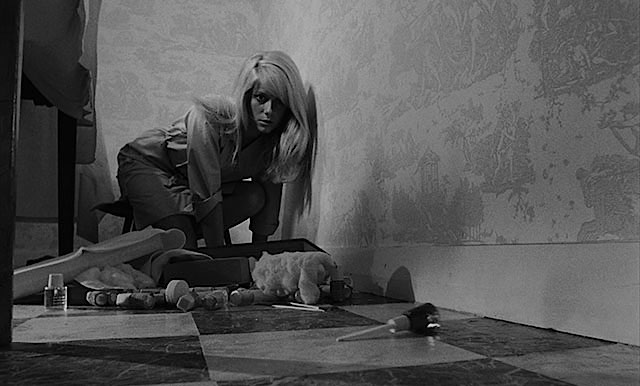

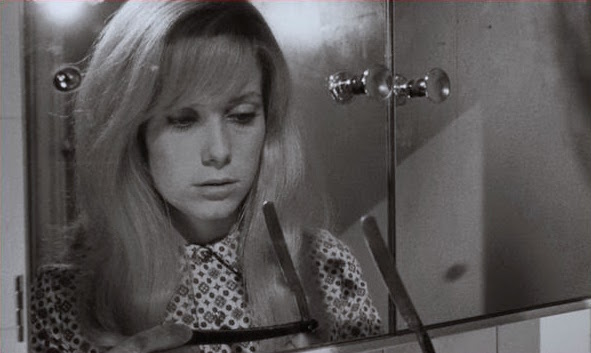








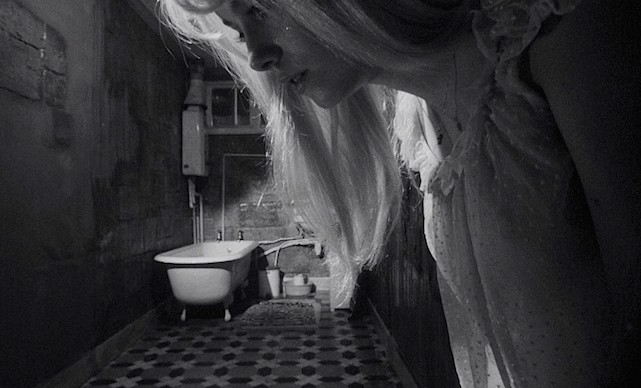




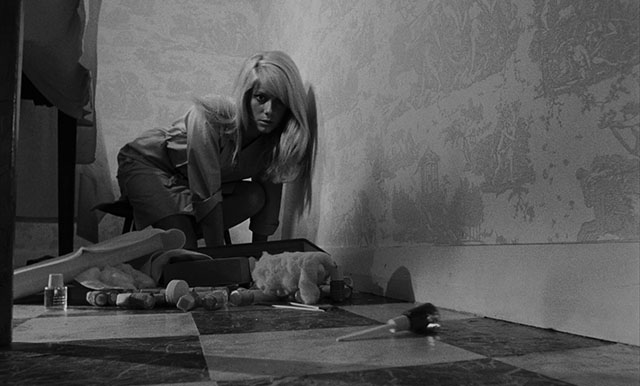



























!["You wanna fuck?" Well, yes, Mr. [insert name here] is "totally OK" to take Carrie Fisher up on her offer. Shampoo Hal Ashby, 1975 Cinematography | László Kovács](https://mattystanfield.wordpress.com/wp-content/uploads/2015/07/carrie-carrie-fisher-34047476-600-400.jpg?w=922)



































